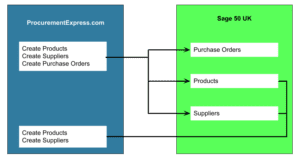 It takes money to make money, however you still need to do it responsibly.
It takes money to make money, however you still need to do it responsibly.
Definition of Direct Spend:
Direct costs are expenses directly linked to providing a specific product or service. Business owners sometimes reduce those costs by substituting the expensive materials with cheaper options. That can include equipment as well as employees. This might sound like a fool-proof plan at that moment, however the longterm effects can have a negative impact on the business with regards to quality and sales, not to forget people’s safety. In these circumstances sales lost could have bigger and negative impact on the business owner more that trying to save on the reduction of direct costs.
Demand
When the demand increases direct spend increases. When this happens, there is no doubt that you are doing something right. The upside is when your products are consistently in demand, your small business grows. The downside is that direct spend usually increase when you sell more products or expand a service. For instance extra employees means more wages. Companies calculate how long each kind of employee takes to do the job. Then, to find the total direct labor cost of the product, they multiply this time period by the hourly cost of paying each worker.
Re-evaluate Employees
Have a look at the job descriptions of your employees. Depending on the type of business, you can get away with fewer employees by determining if you can reduce direct spend for salaries by combining or eliminating some functions. That is if the safety of your employees or the quality of your products won’t be compromised. Determine if you need a lot of full-time staff and if you can get away with only hire temporary staff during peak seasons.
Materials/Products
If your current materials are driving up your direct spend, do some research and find a generic substitute that is less expensive and that would not compromise the quality and profitability of your business. For instance: A pastry shop, whose main ingredient is flour, may use all-purpose flour for their breads and pastries, rather than using only bread flour for bread and cake flour for everything else. All-purpose flour can mimic the taste of bread flour if the cost of wheat increases significantly. The quality stays the same and the pastry shop still makes a good profit. Then again some pastry shops may decide to buy in bulk and stock extra bread flour to avoid paying higher prices in the future as wheat prices rise. However, that strategy could backfire if wheat prices drop before the baker finishes the excess flour bought at a higher price.
Tools
The tools or equipment you use to provide a product or service can increase your direct spend, especially if the demand on your product has increased. Instead of buying the most expensive equipment you can lease them. On the other hand if you buy too small or cheap, unreliable equipment brands you have never heard of, it might cost you dear in the end. For instance your bakery or pastry shop mixes 10 batches of bread dough at a time and you try to mix everything in a small domestic mixer instead of the industrial Hubbard mixer. Guess what, your maintenance fees will skyrocket and become part of your overheads. You can reduce direct costs by purchasing used equipment that’s sold after the manufacturer has restored it to original condition. Most refurbished equipment should come with a warranty to help protect your investment.
Definition of Indirect spend:
Indirect spend are things that are not related directly to your product or service but still required to do business, such as heat, lights, and rent.
Property rent
Renting business property could be your largest indirect spend and there is not much you can do to reduce the cost. Unless you are going for the whole rugged, warehouse grunge type of feel and run your business from your garage. However, what you can do is to evaluate the facilities available to you. Do you have space that you do not utilize? Can you move to a smaller office space and save some money? Obviously it would be in poor taste to break your lease, thus if the property owner will accommodate the idea they could sublet the extra space to another business.
Utilities
Obviously you need to think about the wellbeing of employees during winter and summer months so being stingy on the electricity, heating and plumbing is not a good way to go about it. Converting to fluorescent lighting, using high but cost-effective air conditioning, and switching off lights and machines that are not being used are only a few ways in which indirect spend can be minimized. Each country has a standard temperature gauge, as per law for building’s thermostats to help save on heating and cooling costs all year long. For South Africa the average building temperature should be 23°C during summer and during winter the temperature should be maintained between 18 and 22°C.
Purchase Control
When purchasing tasks aren’t a primary job function, the employee may want to ‘just get it done quickly’, so he or she can focus on other tasks. This often results in placing orders with a familiar vendor and not necessarily shopping around for the best offer. Procurementexpress.com is a money and time-saving solution to manage purchase orders and put you in control of company spend. Employees can load purchase orders and attach invoices from any device. Managers can approve, reject or comment on purchase orders and get an instant view of budgets, even when on the road and the Finance departments get an accurate and paperless expense tracking system. Book a free demo to find out how ProcurementExpress.com can work for you.




